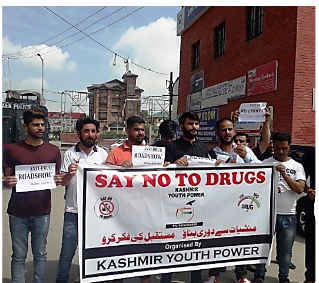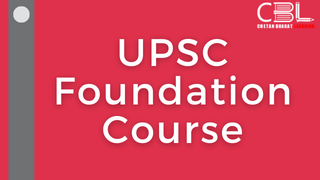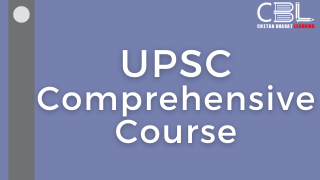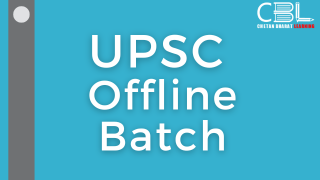Important for
Prelims: Social Issues
Mains: General Studies I
Rise in Drug Abuse
- Recent surveys by the state Ministry for Excise highlights the rise in the drug overtake cases in Kerala. 300% increase in drug cases over the past six years, with arrests up 90%.
- The Rise in Drug Abuse cases registered under the Narcotic Drugs and Psychotropic Substances (NDPS) Act in 2022 was 26,629, a significant increase from 5,924 cases in 2016 and 9,245 cases in 2019.
- Nearly 97% of the respondents admitted to using some form of drug with Cannabis (ganja) being the most consumed drug (82%), followed by tobacco (75.6%).
- The Rise in Drug Abuse report has also highlighted that cannabis is finding its way into the state from Odisha, Andhra Pradesh, and Bihar.

Major reason for drug availability
- India’s location between the world’s two main illicit opium-producing regions, the Golden Crescent and Golden Triangle, has left its borders open to drug trafficking. It emanates from two fronts, the NW and NE, which pose a danger to national security and border violations, respectively.
Major challenges in controlling the drug menace
- High demand: The demand for drugs in India is high and is driven by a growing population of young people and an increase in disposable income.
- Lack of effective law enforcement: Despite efforts by the government to curb drug trafficking, the porous borders and widespread corruption in India make it difficult to effectively enforce anti-drug laws.
- Inadequate rehabilitation facilities: There is a shortage of rehabilitation facilities and resources for those struggling with drug addiction, making it difficult for them to access the help they need.
- Difficulty in prevention and education: Drug abuse prevention and education campaigns are often underfunded and not effectively implemented, making it difficult to reach those who are most at risk.
- Lack of comprehensive approach: The lack of a comprehensive approach to addressing the drug problem in India, including both treatment and prevention, makes it difficult to effectively address the issue.
Government steps to curb Drug abuse in India
- National Drug Demand Reduction Policy: It aims to prevent and reduce drug abuse through multiple strategies including demand reduction, supply reduction, and harm reduction.
- Rehabilitation: The government has set up multiple rehabilitation centers and de-addiction clinics to provide treatment and support to individuals struggling with drug addiction.
- Narcotic Drugs and Psychotropic Substances (NDPS) Act(1985): It is the main legal framework in India to curb drug abuse and trafficking, and imposes stringent penalties on those involved in drug-related crimes.
- Information dissemination: The government has implemented various public awareness and educational campaigns to spread knowledge about the dangers of drug abuse and to prevent drug use, particularly among young people.
- Co-ordination: The government also works with other countries in the region to curb cross-border drug trafficking and to dismantle illegal drug production and distribution networks.
- Support: The Ministry of Social Justice and Empowerment runs a scheme to provide financial and technical assistance to NGOs and other organizations working on drug demand reduction and rehabilitation.
- Central Bureau of Narcotics (CBN): It is the main enforcement agency responsible for implementing the NDPS Act and for conducting raids and arrests in connection with drug-related crimes.

What can be done to curb the issue of drugs?
- Improving access to treatment and rehabilitation: Providing access to quality addiction treatment and rehabilitation resources can help individuals overcome their drug dependence.
- Strengthening law enforcement: Strengthening law enforcement efforts to curb drug trafficking and distribution can reduce the availability of drugs in the country.
- Educating the public: Educating the public about the dangers of drug abuse through campaigns, public speaking, and school programs can raise awareness and discourage drug use.
- Addressing root causes: Addressing the root causes of drug abuse, such as poverty, lack of education, and mental health issues, can help prevent people from turning to drugs in the first place.
- Involving community leaders: Involving community leaders and organizations in the fight against drug abuse can help mobilize local resources and increase public support for drug-control efforts.
- Encouraging alternative activities: Encouraging individuals to participate in alternative activities, such as sports, music, and community service, can provide positive outlets and reduce the risk of drug abuse.
- Implementing effective public policy: Developing and implementing effective public policy that addresses the issue of drug abuse can help prevent drug use and support those who are struggling with addiction.
- Researching new treatments and prevention methods: Investing in research and development to find new treatments and prevention methods can help reduce the harm caused by drug abuse.
Read More About the Drug’s:- CLICK HERE
Practice Questions for Prelims
Mains Practice Question




Leave a Reply
You must be logged in to post a comment.